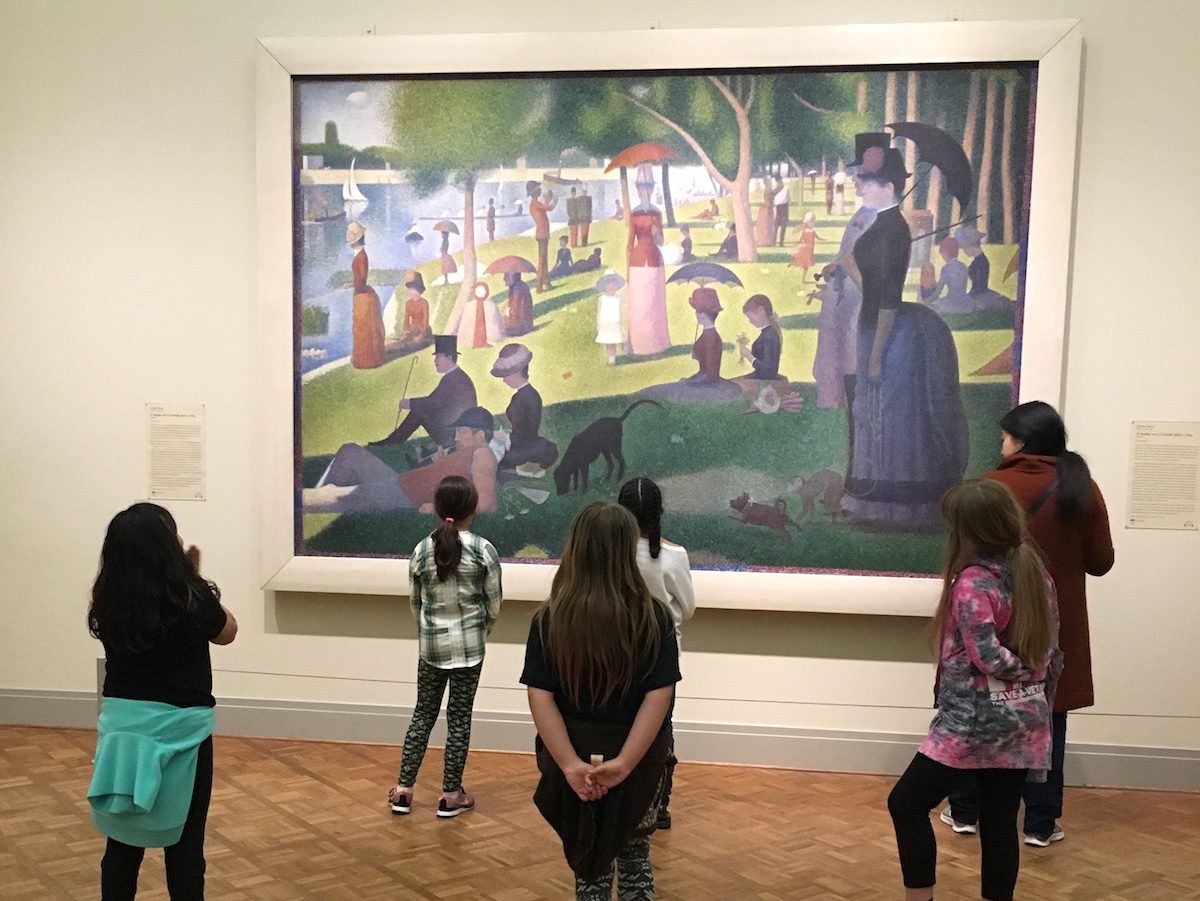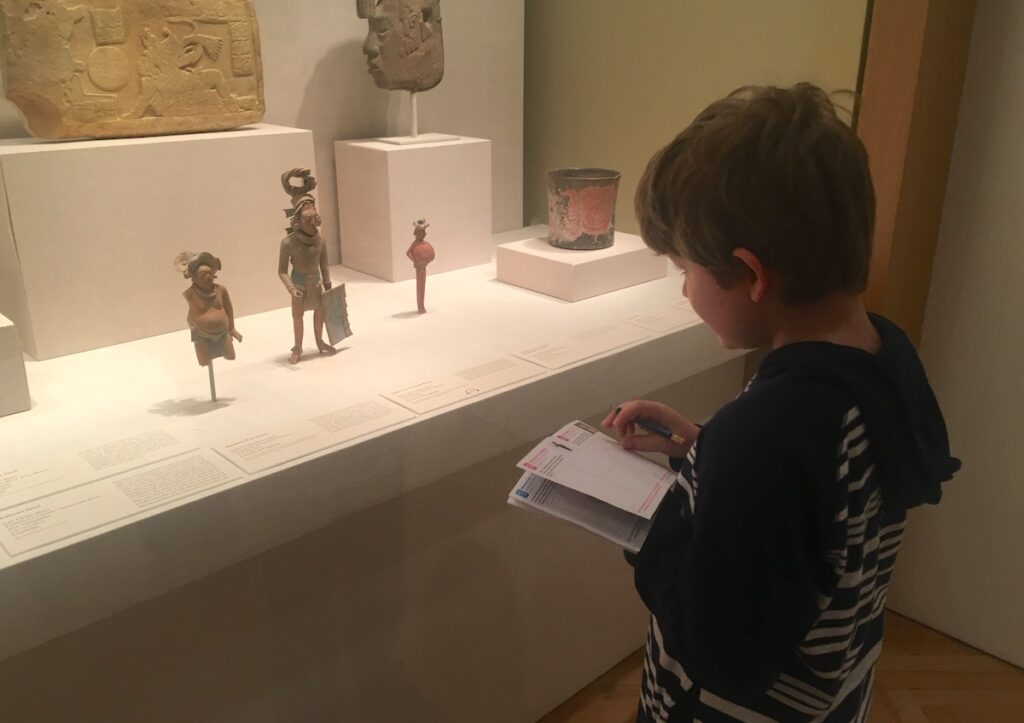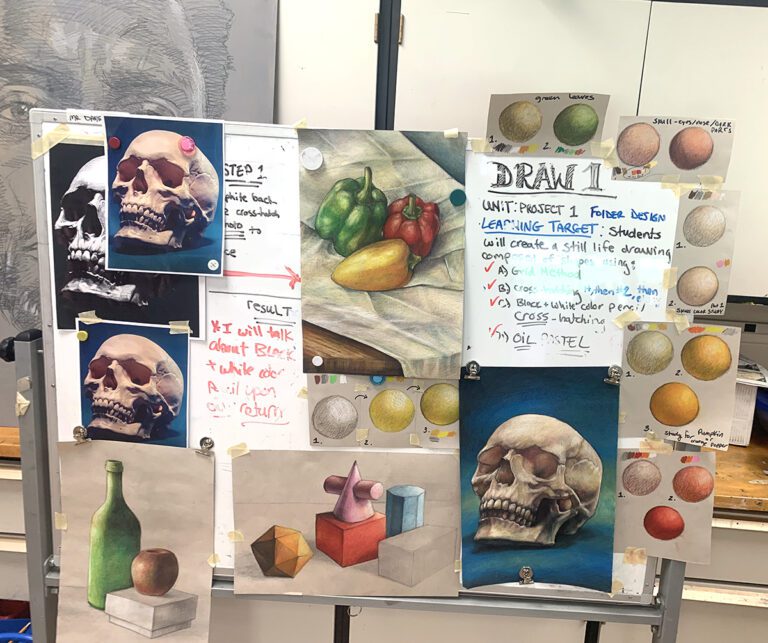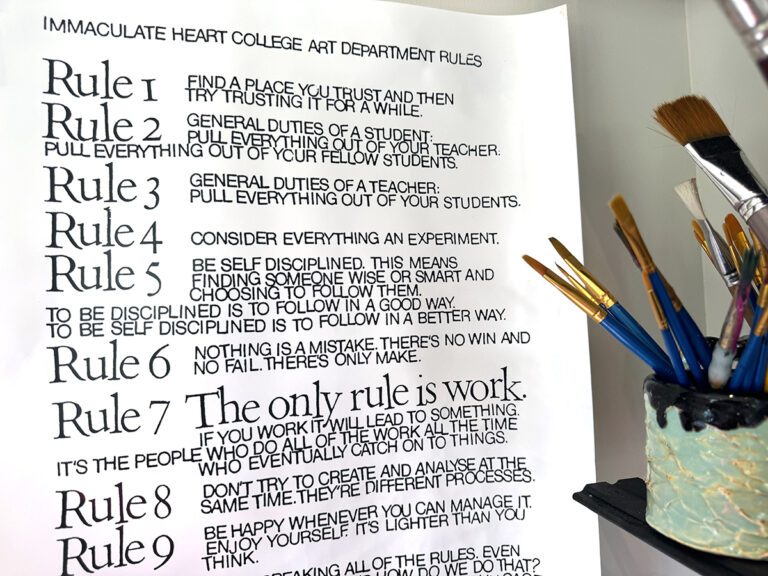Taking students to experience art in person can make for an unforgettable field trip. For inexperienced and new teachers alike, the thought of organizing such a trip can be daunting. However, don’t let this deter you from creating a truly engaging experience for your students.
Here are 5 tips to help you pull off a memorable field trip.
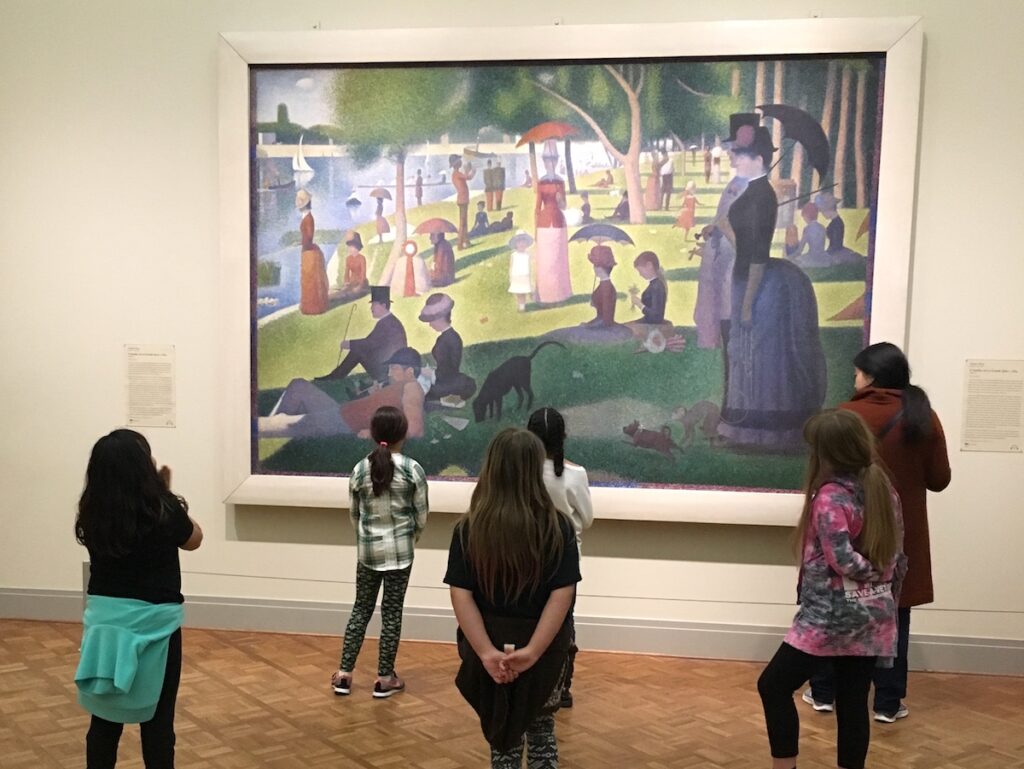
1. Schedule and plan ahead.
There are a lot of planning details that go into a school field trip. Start by looking at your school calendar and propose a few potential dates to administration and students’ classroom teachers. Once you’ve ruled out any date conflicts, make arrangements with the art museum.
Several museums offer docent-led tours, special activities, and/or rates specifically for school visits. Book your date with the museum early so that you can arrange the best experience possible for your students. Find out the museum’s specific policies on student to chaperone ratios, cameras, backpacks, and more before arriving.
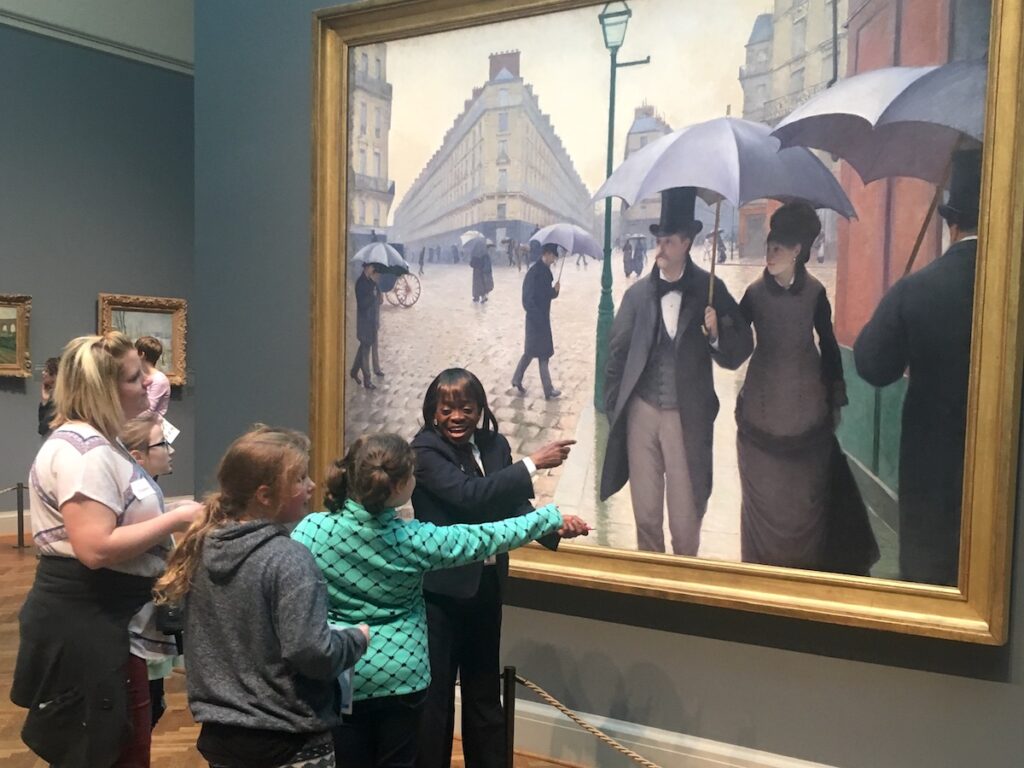
2. Look for curriculum connections.
Take a look at your curriculum units; specifically the artists and artwork you introduce students to over the course of a year. Identify key works from your curriculum that are also represented in the museum’s collection.
If the museum you are planning to visit doesn’t have any specific works from your curriculum, consider taking a look at artwork related to the skills or themes your students have learned about.
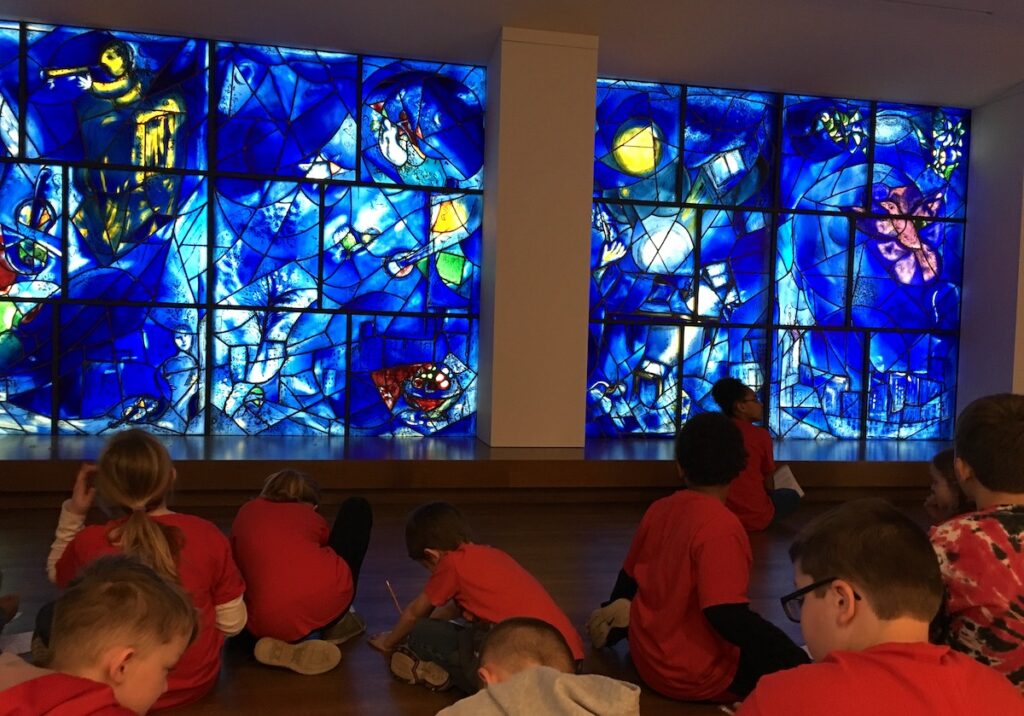
You may also want to plan a new lesson around a specific work at the museum and schedule it around your visit. For example, if you’re going to the Art Institute of Chicago, you could plan a lesson around Marc Chagall’s “American Windows.” You could plan the museum project just before your trip, or just after. Either way, you’ll be creating a strong connection to artwork students will see in person.
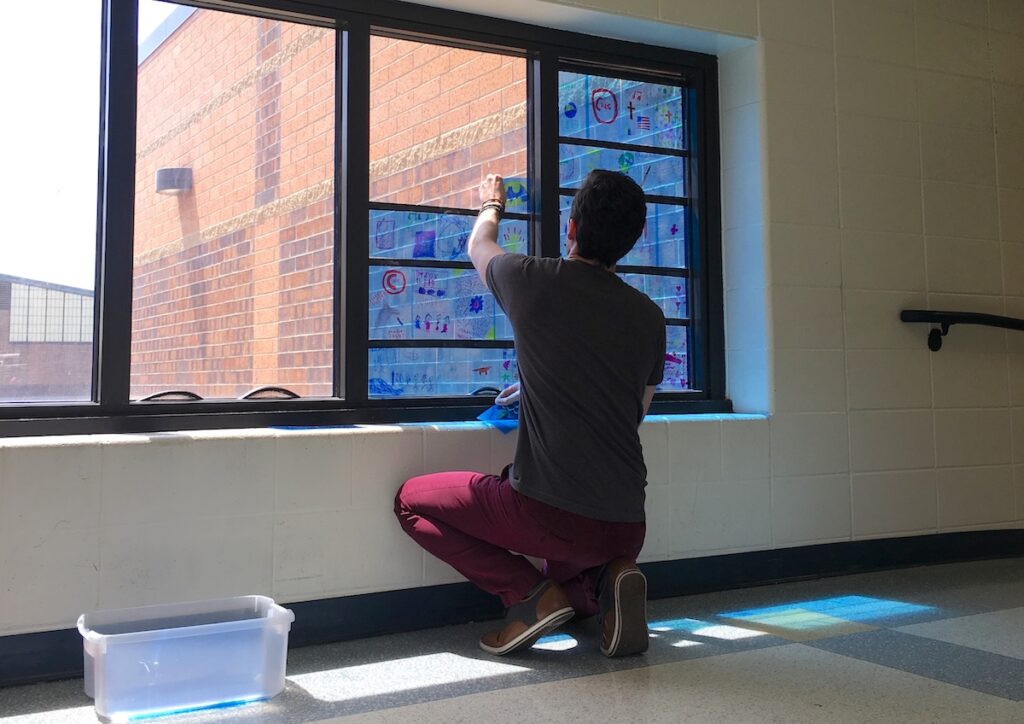
3. Design a museum guide that leaves room for student exploration.
Highlight specific rooms or artwork you want students to experience. Try to keep some unstructured time available for students to explore on their own as well. You want students to see some of the art you’ve introduced them to in the classroom. However, part of the museum field trip should also allow students to discover new favorites.
Create a prioritized list of must-see work for students to explore and where to find them. You can make this a scavenger hunt for students to check off with their chaperones along the way. Provide a few open-ended questions about some of the artworks to provide chaperones with potential discussion prompts.
Leave a portion of time for students to look at the museum map and do some exploring based on their own personal interests. Dragon enthusiasts may be interested in a section of Medieval Art. Fashion, animation, art from specific countries, and more can be areas found in most art museums that may not be a part of your normal curriculum.
Remember this field trip may be the one opportunity some of your students have to visit an art museum. Allow them to explore their natural curiosities and make the most of their trip.
4. Reach out for volunteers to ensure safety and fun for all students.
The more chaperones you can take, the better your student to adult ratio will be. Taking students to a new place, often in a big city, can be scary. Reach out to your students’ parents to volunteer as chaperones. This takes some of the worry off of your shoulders and allows you to move about the museum and check in with the various small groups.
Give clear directions to your chaperones with a list of your expectations. Include meetup times and locations for lunch and bus loading. Be sure to get a list of all of your chaperones’ cell phone numbers so you can reach them in case of emergency. You will want to share yours as well.
5. Plan a practical place for lunch.
When planning your field trip, you will want to have a lunch plan that works well for the place you are visiting. Check and see if the museum allows sack lunches for school visits, or has group rates on meals. The museum may also have a cafeteria you could check for an average meal price.
Alternatively, you could take students somewhere to eat near the museum. Keep in mind that the focus of your field trip is the art museum, and you want to maximize your time there. The trip to the pizza or burger place should not end up being the highlight of your trip. Plan a practical lunch location so that your students can eat in a timely fashion, and return to exploring the great collection of art they came to see.
If you’re interested in taking an in-depth look at planning field trips, be sure to check out the Planning Field Trips PRO Learning Pack. You’ll gain even more insight into planning an unforgettable experience for your students.
What tips have made your art museum field trips successful?
What’s holding you back from planning your first field trip?
Magazine articles and podcasts are opinions of professional education contributors and do not necessarily represent the position of the Art of Education University (AOEU) or its academic offerings. Contributors use terms in the way they are most often talked about in the scope of their educational experiences.
